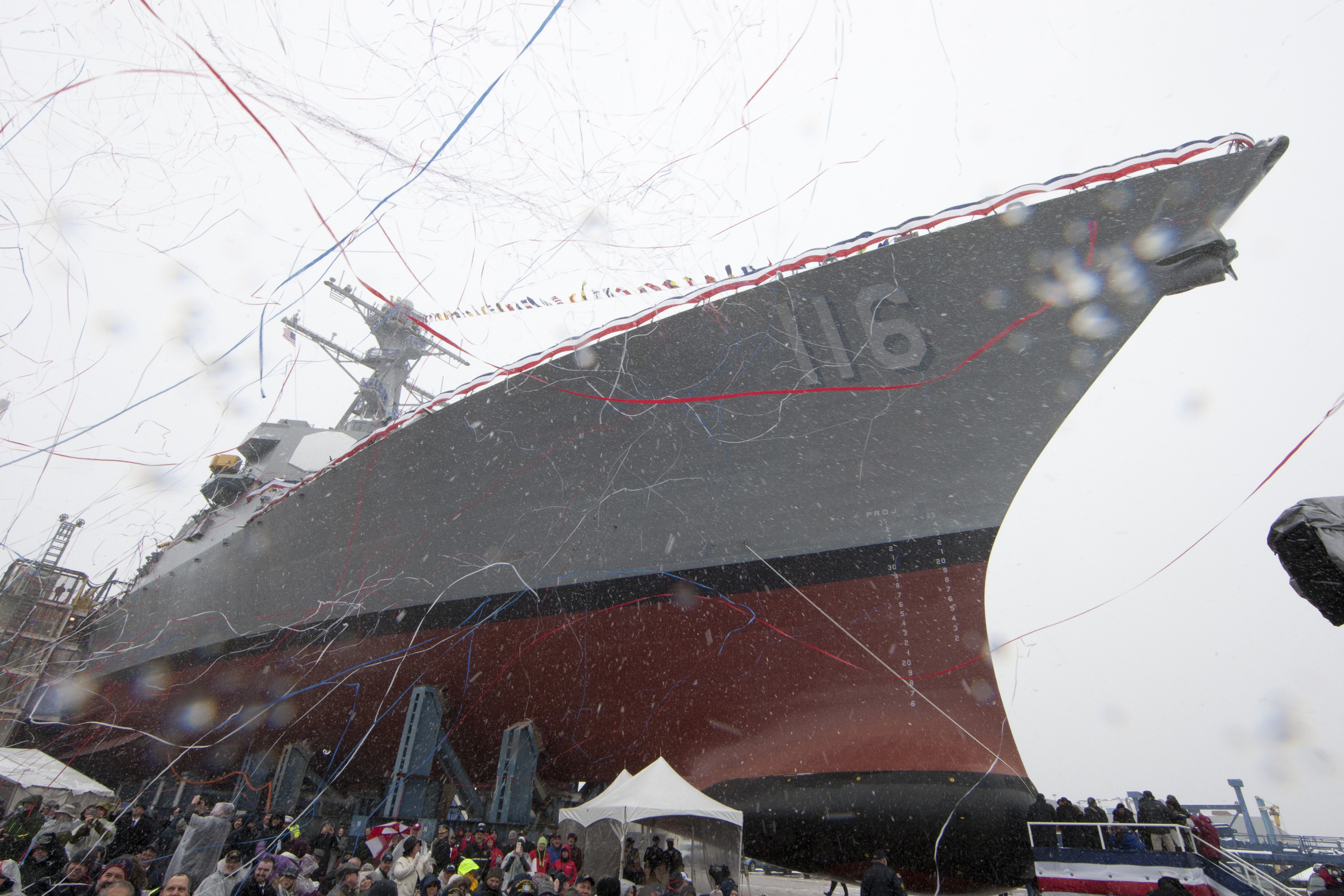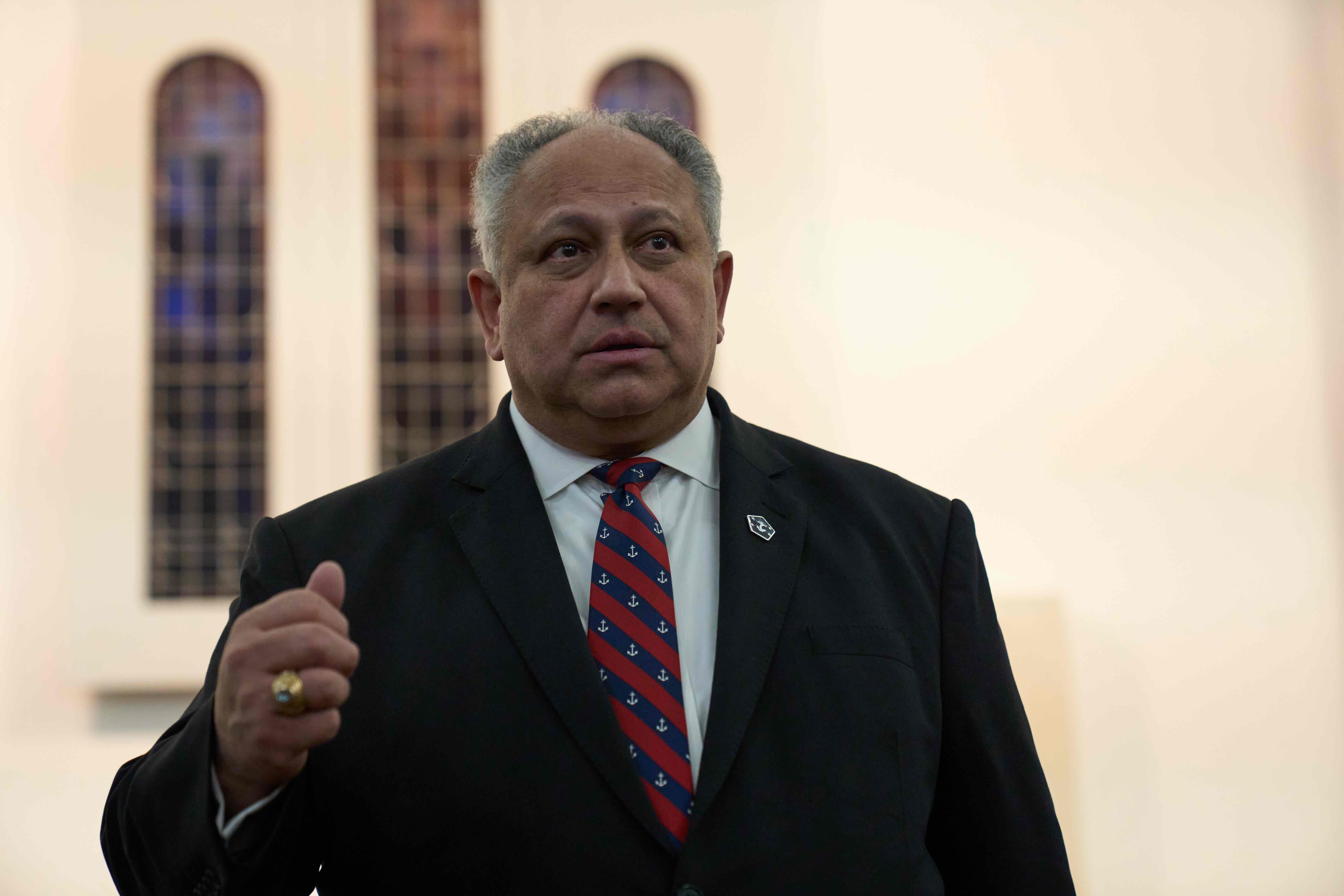
Management of General Dynamics Bath Iron Works told a local on-strike machinists union they are unwilling to budge on the latest contract that would allow temporary workers to help with the backlog of work to keep up with Navy shipbuilding schedules, according to letters sent to the union on Wednesday.
The yard, which has missed schedules in building and delivering two classes of guided-missile destroyers for the last several years, would bring on the temporary workers to fix emergent issues across the yard.
The union, the Local S6 chapter of the International Association of Machinists and Aerospace Workers, says that the temporary workers would play havoc with the existing systems of overtime and seniority and take away opportunities from represented workers.
That impasse has led to the strike that kicked off this week, with both management and the union currently inflexible in their positions.
“The status quo must change,” reads a Wednesday statement from the yard.
“For months, union leadership defined a fair contract as one with fair wage increases. BIW more than met that obligation with its offer. Since April of 2018, BIW has been clear that a fair contract is one that permits the company to quickly deploy available shipbuilders where they are needed most in order to meet the yard’s obligations to the Navy. To date, the union has refused to even discuss this issue. We do not have a secondary or alternative offer to present. We cannot offer a contract that sets this yard up for failure.”
In a Wednesday letter to the union, Bath management said the company has not changed its position on the temporary workers.
“The Company’s position with respect to the primary non-economic aspects of its last, best and final offer also has not changed. The Company remains willing, however, to meet in an effort to work toward an agreement. It just is unclear what we would meet to negotiate over at this time if the Union’s position similarly is unchanged,” wrote Jonathan Mason with the yard posted on the union’s website.
In response, Jay Wadleigh with the union wrote on Wednesday, “it is unfortunate that Bath Iron Works is not willing to review and revise its non-economic proposals. 87% of the voting membership made it clear that attacks on seniority and expansion of subcontract language are not acceptable or viable solutions to managerial shortcomings. The Company’s attempts to mislead the members, and the press, will be exposed. The Company should carefully consider the long-term damage this course of action is doing to Bath Iron Work’s reputation.”
The issue of temporary workers is an old one at Bath. The union fought to keep temporary workers from the shipyard as former BIW president Fred Harris attempted to bring in subcontractors to help shore up gaps in the workforce in 2015. Harris oversaw GD’s NASSCO yard and used temporary workers and subcontractors to improve efficiencies that improved deliveries on the initially faltering Lewis and Clark logistics ship program. He was unable to implement similar methods at Bath and lost a contract to build the Coast Guard’s Offshore Patrol Cutter and retired shortly after the contract award.
The latest strike comes as Bath has struggled to remain competitive in building warships, with schedule slips and price increases in both the Zumwalt-class and Arleigh Burke-class guided-missile destroyer lines. Since the 2009 restart of the Burke line, costs per-hull have trended higher at the Maine yard with each contract, while rival Ingalls Shipbuilding in Mississippi has trended lower.
On Monday, the Navy’s acquisition chief told reporters that he was very concerned on how the strike could affect the shipbuilding program.
“We are very dependent on Bath Iron Works for their production and support of our ships for our sailors,” Assistant Secretary of the Navy for Research, Development and Acquisition James Geurts told reporters.
“My expectation is both sides will work aggressively and with a sense of urgency so we can get these programs [exected].”





